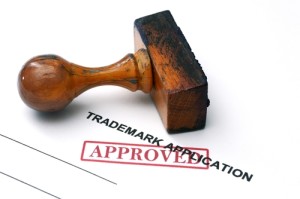Is It Software? Is It a Service? It Matters for Trademark Registration Purposes

Photo credit: Trademark application // ShutterStock
In NetJets, the federal district court cancelled an incontestable, 18 year old registration for INTELLIJET for “computer software for managing aircraft leasing and sales” as void ab initio and as abandoned, even though:
* NetJets had used the mark as the name of its internal software since 1995;
* NetJets had spent over $20 million to upgrade its software;
* NetJets launched a “portal” in 2013 where clients could log in and see the INTELLIJET name displayed on the screen, but the mark was not displayed to non-customers who access the NetJets website;
* NetJets discussed the IntelliJet’s software functionality in newsletters to owners and in literature provided to passengers on its planes;
* NetJets brochures have mentioned the IntelliJets software;
* Several magazine articles about NetJets have mentioned the IntelliJets software;
* NetJets demonstrates the software for customers and potential customers.
The court determined that NetJets did not have enforceable rights in the INTELLIJET mark because it did not use the mark in commerce as the term “use in commerce” is defined in the federal Lanham Act. Section 45 of the federal Lanham Act, 15 U.S.C. § 1127, defines “use in commerce,” in relevant part:
The term “use in commerce” means the bona fide use of a mark in the ordinary course of trade, and not made merely to reserve a right in a mark. For purposes of this Act, a mark shall be deemed to be in use in commerce – (1) on goods when – (A) it is placed in any manner on the goods or their containers or the displays associated therewith or on the tags or labels affixed thereto; or if the nature of the goods makes such placement impracticable, then on documents associated with the goods or their sale; and (B) the goods are sold or transported in commerce …
Key factors in the court’s determination that the use of the INTELLIJET mark on NetJets’ software was not a “use in commerce” were:
* NetJets is not in the business of selling software;
* The IntelliJet software is simply the conduit through which NetJets provides a high level of service to its customers;
* NetJets does not promote the software as a separate product, but only as part and parcel of the services NetJets provides; and
* NetJets does not sell the IntelliJet software separately from the services that NetJets provides.
As a result, the court concluded that NetJets’ use of the INTELLIJET mark is not a “use in commerce” on the software, and cancelled the registration.
The decision is consistent with, and cites, the 2012 Federal Circuit decision in the long-running saga of Lens.com v. 1-800 Contacts. In Lens.com, the issue concerned a registration for the mark “LENS” for use in connection with “computer software featuring programs used for electronic ordering of contact lenses in the field of ophthalmology, optometry and opticianry.” 1-800 Contacts filed a cancellation petition, alleging that Lens.com fraudulently obtained or abandoned the registration of the LENS mark because Lens.com never sold or engaged in the trade of computer software. The Trademark Trial Appeal Board (TTAB) granted summary judgment to 1-800 Contacts on the claim of abandonment because Lens.com’s software was ”merely incidental, to its retail sale of contact lenses, and is not a ‘good in trade,’ i.e., “solicited or purchased in the marketplace for [its] intrinsic value.”” Lens.com, 686 F.3d at 1378. Lens.com appealed to the Federal Circuit, which affirmed the decision of the TTAB.
The decision seems formalistic, but Section 1(a)(2) of the Lanham Act, 15 U.S.C. Section 1051(a)(2), does require that the application contain “specification of…the goods in connection with which the mark is used…” Those who prepare trademark applications regularly are used to being specific and to the Patent and Trademark Office’s strict interpretation of the phrase. As a result of the NetJets and Lens.com decisions, and similar decisions in other courts, a trademark owner that uses software in its business should take care in determining whether to file a trademark application at all to cover the software, and what goods or services are covered in any trademark application that is filed. To be safe, especially in close situations, the trademark owner should consider filing separate applications to register the mark for the software and for the underlying services. This strategy would still provide for registration and protection of the mark for the services in the event that the registration of the mark for software is challenged or cancelled.
Case citation: NetJets Inc. v. IntelliJet Group, LLC, No. 2:12-CV-0059 (S.D. Ohio Dec. 19, 2013)
Pingback: Is Software a Good or a Service? | Geek Law()
Pingback: The Treacherous Gap Between Goods and Services in Trade-marks Law | snIP/ITs()